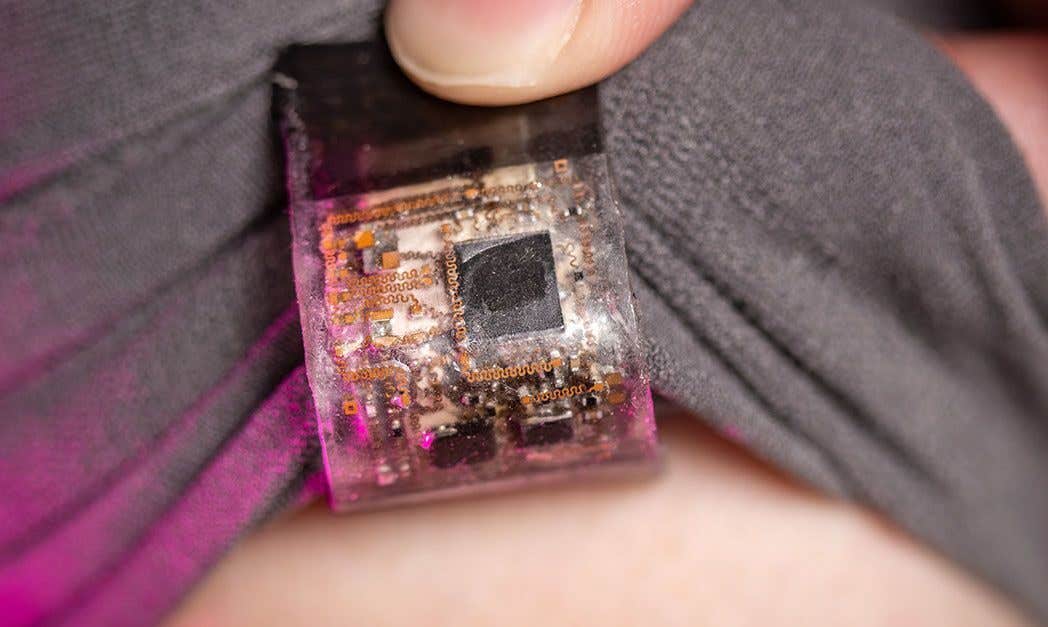Newly discovered quantum state revolutionizes material science
Princeton researchers uncover a hidden chiral quantum state in a topological material, reshaping our understanding of symmetry in physics.

A Princeton team has found a hidden chiral quantum state in a Kagome lattice material, breaking key symmetries and opening new paths in physics. (CREDIT: CC BY-SA 4.0)
In the natural world, many things come in mirror-image pairs. Your left and right hands are a perfect example—they look alike but can’t be perfectly superimposed. This idea, called chirality or "handedness," is found everywhere in science, from the spiral of DNA to the twist of snail shells. For a long time, scientists believed certain materials didn’t have this handedness. But a groundbreaking discovery has changed that thinking.
A team of researchers at Princeton University, led by physics professor M. Zahid Hasan, has found a hidden chiral quantum state in a material long considered non-chiral. Their research, published in Nature Communications, uncovered new behavior in a special type of material called a Kagome lattice. This result changes what scientists thought they knew about how certain materials behave on a quantum level.
“This is somewhat like pointing the James Webb telescope at the quantum world and discovering something new,” said Hasan. “We’re finally able to resolve subtle quantum effects that had remained hidden in a topological quantum material.”
How the Discovery Was Made
The Kagome lattice is a pattern of triangles named after a traditional Japanese basket design. It has become a go-to structure for studying strange quantum effects because of its geometry. Though it was assumed to be non-chiral, researchers noticed something odd a few years ago.
Back in 2021, Hasan’s team found that under special conditions, a material made of potassium, vanadium, and antimony—KV₃Sb₅—formed a repeating pattern in its electron cloud called a charge density wave. This hinted at deeper, hidden behaviors. But while this clue was important, it didn’t fully prove that the material had become chiral.
To find out for sure, graduate student Zi-Jia Cheng and postdoctoral researcher Shafayat Hossain built a special tool: a scanning photocurrent microscope, or SPCM. Unlike previous tools, this device shines circularly polarized light—light that spins either right or left—on the material. Then it measures the electric current produced in response.
Related Stories
At room temperature, the material showed no preference for the direction of light. But when cooled to just 4 degrees Kelvin (about -452°F), something fascinating happened. The material began to react differently to right- and left-handed light. This told the team they were seeing a new chiral state.
“Our measurements directly pinpoint broken inversion and mirror symmetries,” Cheng explained. “This conclusively establishes the intrinsic chiral nature of the charge-ordered state in a topological material for the first time.”
Why Chirality and Symmetry Matter
This discovery matters because symmetry is a basic idea in science. Many of the laws that govern the universe rely on the assumption that things are the same when flipped, rotated, or moved. When those symmetries break, new and surprising behavior can happen.
The change in KV₃Sb₅ is an example of a phase transition—a shift in state like water freezing into ice. But here, instead of water molecules lining up, electrons rearrange themselves into a chiral pattern. This process is called spontaneous symmetry breaking. It's been studied before in other systems, but never quite like this and never in this kind of topological material.
Topological materials are a special class of solids where the arrangement of electrons follows complex mathematical rules. These materials can host rare properties like conducting electricity only on their surface, or resisting heat and defects. The Kagome lattice in this study is particularly useful because it allows scientists to explore behaviors tied to both symmetry and topology.
The Princeton researchers built their devices with great care. Along with former postdoctoral fellow Qi Zhang, they created ultra-clean samples and chilled them using liquid helium. They measured how the material reacted when exposed to circularly polarized mid-infrared light, at wavelengths around 10.6 microns. They observed a strong response when the light’s spin matched the material’s internal chiral state—a sign of a phenomenon called the circular photogalvanic effect (CPGE).
The CPGE has become a powerful tool in recent years. It works by measuring how electric currents change depending on the direction of light spin. In this case, the presence of a CPGE signal directly proved that the material's internal structure was chiral. Even more, the direction and pattern of the signal revealed which symmetries had been broken.
A Long Debate Finally Settled
The discovery puts to rest years of debate among physicists. Since 2021, there’s been disagreement over whether the charge-ordered state in KV₃Sb₅ actually breaks key symmetries or if those effects were caused by noise or imperfections. Earlier tools like scanning tunneling microscopes and electrical measurements had shown hints of chirality, but results were unclear and often contradicted each other.
By using both scanning photocurrent microscopy and theoretical modeling, this new study gave the strongest proof yet. The CPGE only appeared when the material entered its charge-ordered phase, and only along certain directions. This told the team that the material had broken both inversion and mirror symmetries but still kept some rotational features.
“Our study not only visualizes the chiral nature of the Kagome charge order, but also highlights the nonlinear photogalvanic effect as a sensitive probe for detecting subtle symmetry breakings,” the authors wrote.
Even so, the science isn’t completely settled. Hasan admitted, “We confirmed the phenomenon, but we don’t yet have a rigorous theory as to why it occurs. We still don’t fully understand it.”
That said, the path forward is bright. Understanding how and why symmetries break in these materials could one day lead to better ways of designing optoelectronic and photovoltaic devices—tools that convert light into electricity with high precision.
Standing on the Shoulders of Giants
This research is part of a long tradition at Princeton. The university has been home to many breakthroughs in quantum and topological physics. In 1985, the quantum Hall effect earned a Nobel Prize. Later, Princeton’s Daniel Tsui won the 1998 Nobel Prize for the fractional quantum Hall effect. In 2016, F. Duncan Haldane, another Princeton physicist, was honored for showing how topological states can arise in two-dimensional systems.
Hasan’s own team made headlines in 2007 for discovering three-dimensional topological insulators. Since then, they’ve spent over a decade exploring how symmetry and topology interact. This latest discovery adds a new layer: a material that’s both topological and chiral, with a charge-ordered quantum state that breaks multiple symmetries.
The team believes the same methods they used can help uncover similar hidden properties in other materials. As materials become more complex, especially with multiple layers of order like magnetism and superconductivity, tools like CPGE and scanning photocurrent microscopy may become essential.
Hasan sees no limits: “This is just the beginning. With these sensitive tools, who knows what hidden worlds of topological quantum matter we’ll uncover next.”
Note: The article above provided above by The Brighter Side of News.
Like these kind of feel good stories? Get The Brighter Side of News' newsletter.



